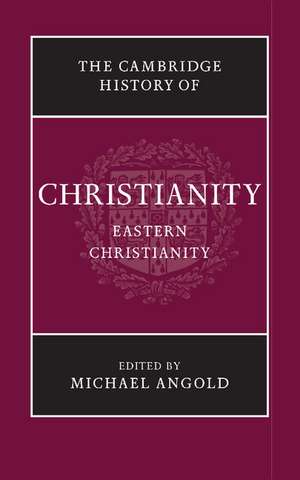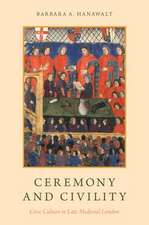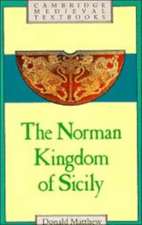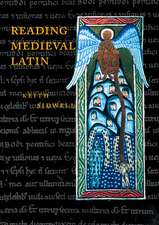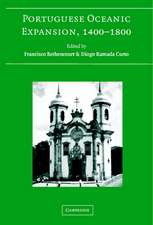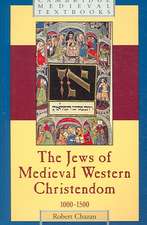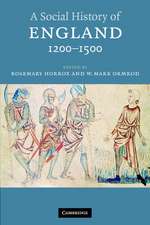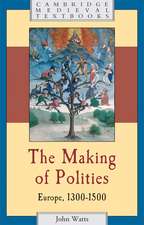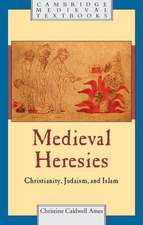The Cambridge History of Christianity: Cambridge History of Christianity
Editat de Michael Angolden Limba Engleză Paperback – 30 iul 2014
Preț: 401.29 lei
Nou
76.81€ • 83.46$ • 64.56£
Carte tipărită la comandă
Livrare economică 21 aprilie-05 mai
Specificații
ISBN-10: 1107423678
Pagini: 744
Dimensiuni: 152 x 229 x 42 mm
Greutate: 1.08 kg
Editura: Cambridge University Press
Colecția Cambridge University Press
Seria Cambridge History of Christianity
Locul publicării:New York, United States
Cuprins
Part I. The Ecumenical Patriarchate: 1. The Byzantine commonwealth 1000–1500 Jonathan Shepard; 2. Byzantium and the West 1204–1453 Michael Angold; 3. The culture of lay piety in medieval Byzantium 1054–1453 Sharon E. J. Gerstel and Alice-Mary Talbot; 4. The rise of Hesychasm Dirk Krausmüller; 5. Art and liturgy in the later Byzantine Empire Nancy Ševčenko; 6. Mount Athos and the Ottomans 1350–1550 Elizabeth A. Zachariadou; 7. The Great Church in captivity 1453–1586 Elizabeth A. Zachariadou; 8. Orthodoxy and the West: Reformation to Enlightenment Paschalis M. Kitromilides; 9. Bars'ky and the Orthodox community Alexander Grishin; 10. The legacy of the French Revolution: Orthodoxy and Nationalism Paschalis M. Kitromilides; Part II. The Russian Church: 11. The Russian church: the first centuries 1000–1400 Stephen Rowell; 12. Russian piety and Orthodox culture 1380–1589 Stella Rock; 13. Art and liturgy in Russia: Rublev and his successors Lindsey Hughes; 14. Eastern Orthodoxy in Russia and Ukraine in the age of counter-Reformation Robert O. Crummey; 15. The Russian Orthodox church in Imperial Russia 1721–1917 Simon Dixon; 16. Russian piety and culture from Peter the Great to 1917 Chris Chulos; Part III. Eastern Christianities: 17. East Christianities (11th–14th centuries): Copts, Melkites, Nestorians and Jacobites Françoise Micheau; 18. The Armenians in the era of the Crusades (1050–1350) S. Peter Cowe; 19. Church and Diaspora: the case of the Armenians S. Peter Cowe; 20. Church and nation: the Ethiopian Orthodox Täwahedo church (from the 13th to the 20th century) Donald Crummey; 21. Coptic Christianity in modern Egypt Anthony O'Mahony; 22. Syriac Christianity in the modern Middle East Anthony O'Mahony; Part IV. The Modern World: 23. Diaspora problems of the Russian emigration Sergei Hackel; 24. The Orthodox church and Communism Michael Bourdeaux and Alexandru Popescu; 25. Modern spirituality and the Orthodox church John Binns.
Recenzii
Descriere
This volume brings together in one compass the Orthodox Churches - the ecumenical patriarchate of Constantinople and the Russian, Armenian, Ethiopian, Egyptian and Syrian Churches. It follows their fortunes from the late Middle Ages until modern times - exactly the period when their history has been most neglected. Inevitably, this emphasises differences in teachings and experience, but it also brings out common threads, most notably the resilience displayed in the face of alien and often hostile political regimes. The central theme is the survival against the odds of Orthodoxy in its many forms into the modern era. The last phase of Byzantium proves to have been surprisingly important in this survival. It provided Orthodoxy with the intellectual, artistic and spiritual reserves to meet later challenges. The continuing vitality of the Orthodox Churches is evident for example in the Sunday School Movement in Egypt and the Zoe brotherhood in Greece.
